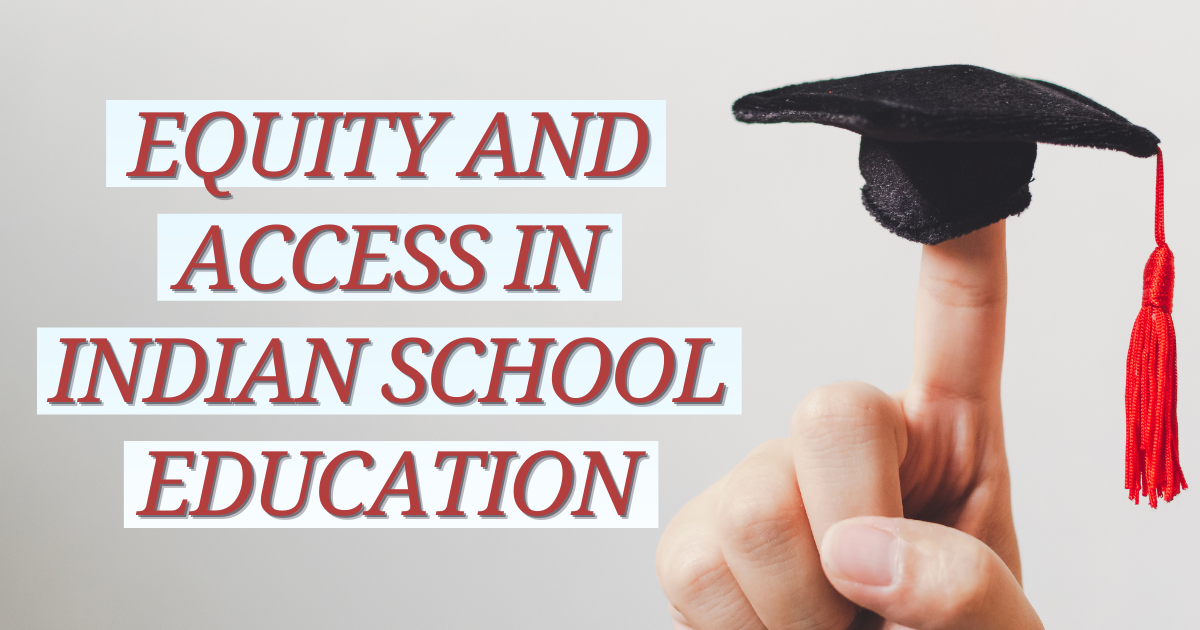Equity and Access in Indian School Education: Bridging the Rural-Urban Divide. India is known for its diversity and contrasts. A country where tradition meets modernity and progress coexists with profound challenges. One of the most serious challenges facing the nation today is educational inequality, especially between rural and urban areas. Educational inequality is a complex topic that includes difficulties in access to quality education and the chances it provides. If you’d like to know more about equity and access in Indian school education and the bridging between rural and urban areas in detail, please keep reading the article below.
Equity and Access in Indian School Education
The education system is one of the major areas where India still faces inequality and segregation. This is an increased gap between attaining better education in rural and urban India. The fund allocation by the government is acting as a driver in increasing the gap. The divide between educational inequality in rural and urban India is well documented in basic infrastructure, access to healthcare, and other indicators. About two-thirds of the population in India consists of rural areas, and it is also home to the majority of the poor in India.

The urban areas boast of advanced facilities; rural areas often struggle with a lack of resources. However, many schools in India are now taking proactive steps to minimize this divide. With initiatives focusing on infrastructure, digital learning, and teacher training, these efforts are gradually creating equal opportunities for students across the country.
According to a study, there are substantial variations between educational practices in rural and urban settings. Larger class numbers, fewer competent teachers, and inadequate infrastructure and resources are more frequent in rural schools. These components play a role in rural areas’ poorer learning outcomes compared to urban areas.
Bridging the Rural-Urban Divide
India is facing a major rural-urban divide in the field of learning achievement at the school level. Even after a huge educational development in the recent years—including physical infrastructure of schools and enrollment of students (at primary and secondary levels)—dropout rates in rural India are extremely high (at 40% and 57%, respectively). The significant causes for this problem are teachers absenteeism, poor quality of teaching due to the non-availability of trained teachers and attractive teaching materials in rural schools.
Urban areas majorly have access to well-equipped schools in India, modern technology, and highly qualified teachers. On the other hand, rural areas face challenges such as limited resources, poor infrastructure, and untrained educators. This inequality creates a major gap in learning outcomes, impacting the future possibilities of rural students.
Role of Technology in Equalizing Education
One of the most significant ways schools in India are bridging this gap is by using technology. There are many educational institutions that are launching digital classrooms and e-learning platforms in rural areas. There tools offer access to high-quality content, which helps students from remote areas to learn on a level with their urban counterparts. Government programs like the Digital India initiative have also played an important role in ensuring technology available in rural schools.
The problems discussed above can be solved or reduced by the following methods:
- Teacher Training: Mostly rural educational institutes lack trained teachers. To resolve this, the teacher training programs must be highlighted for teachers to enhance their skills. This will also motivate and boost the confidence of teacher to teach effectively.
- Infrastructure Improvement: Infrastructure is an important point to remember while talking about proper education. Digital learning depends on technological infrastructure, such as stable internet connection, electricity, proper classrooms, computers, and functional devices. Lack of proper infrastructure leads to frustrating both students and teachers. If the infrastucture is proper in rural areas, means the classrooms have all facilities, and there is proper sanitation, and the guarantee of electricity can improve the difference between rural and urban.
- Digital Learning: Digital learning is very important as it provides students access to a wide array of educational resources. It has transformed teaching methods, making education more engaging, accessible, and inclusive. This can make rural students education much more simple.
- Inclusivity and Awareness: Inclusivity is key to bridging the urban-rural education divide. Schools in India are promoting awareness about the significance of education in rural areas. Awareness can be spread by campaigns as this will increase the value of schooling and will encourage parents to send their wards to schools and provide them with proper education.
